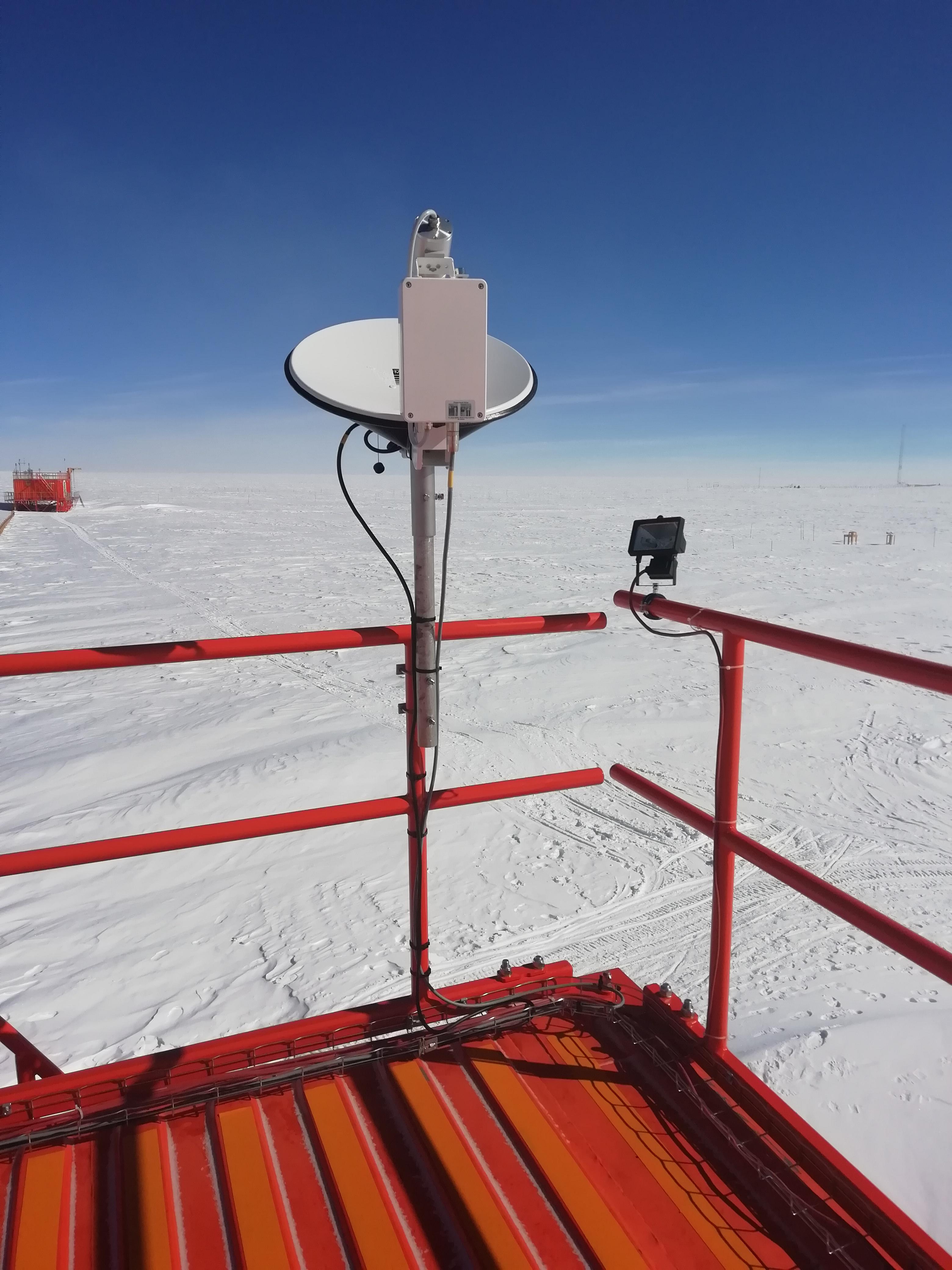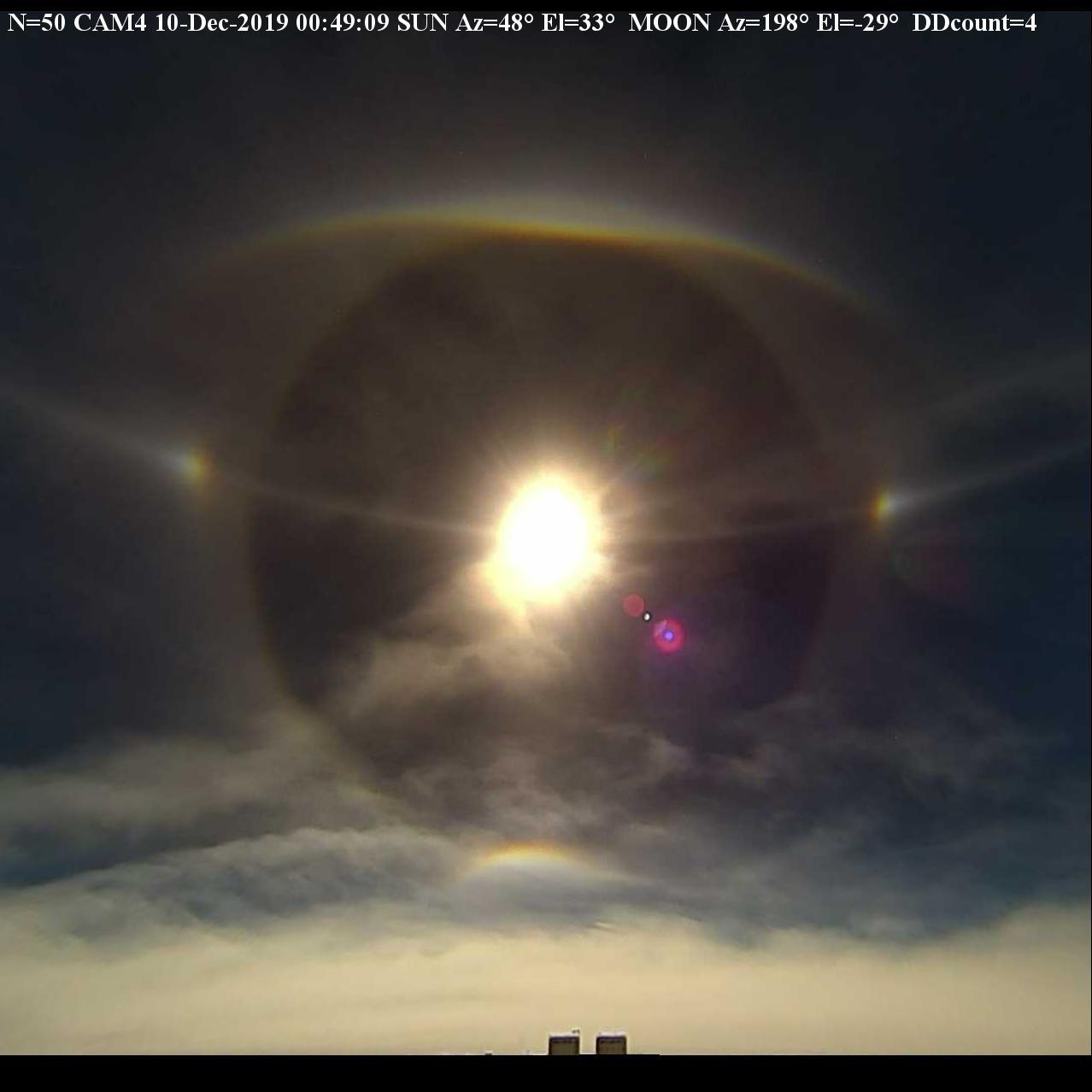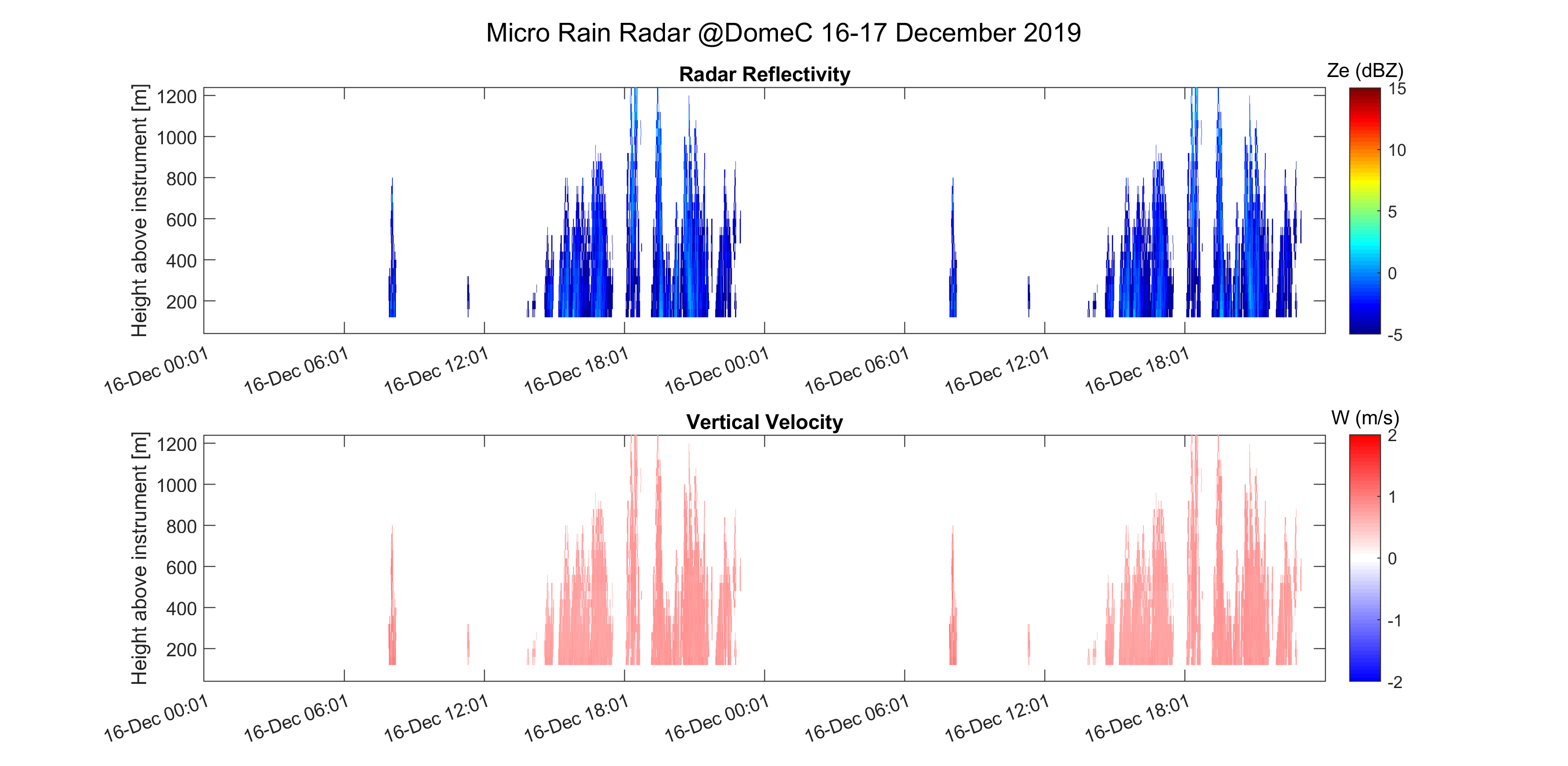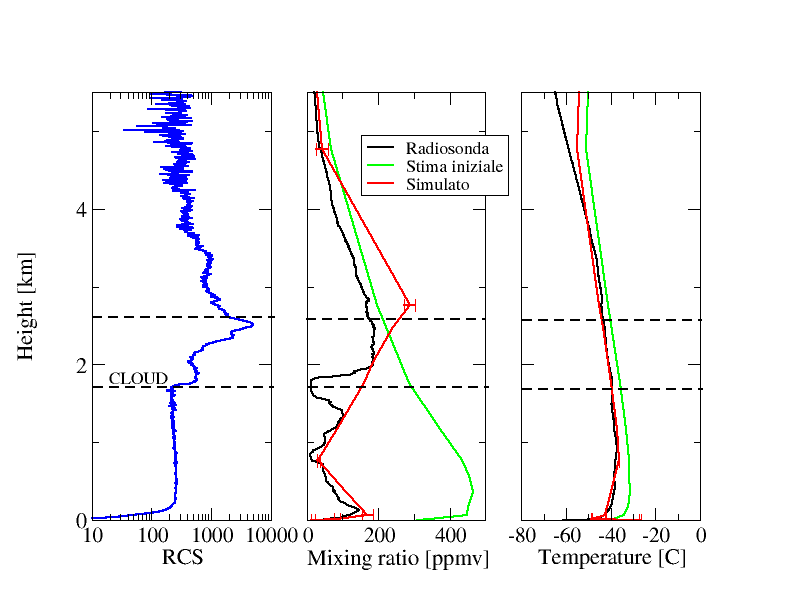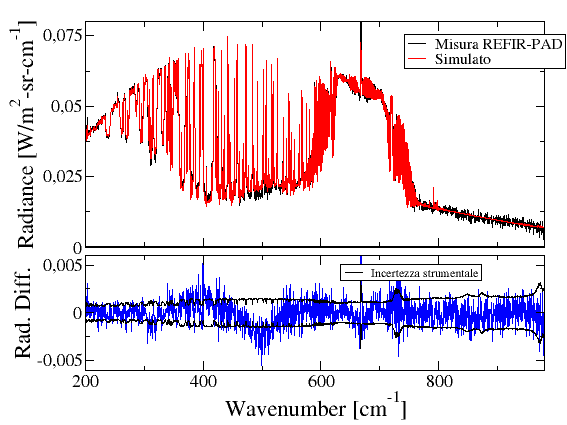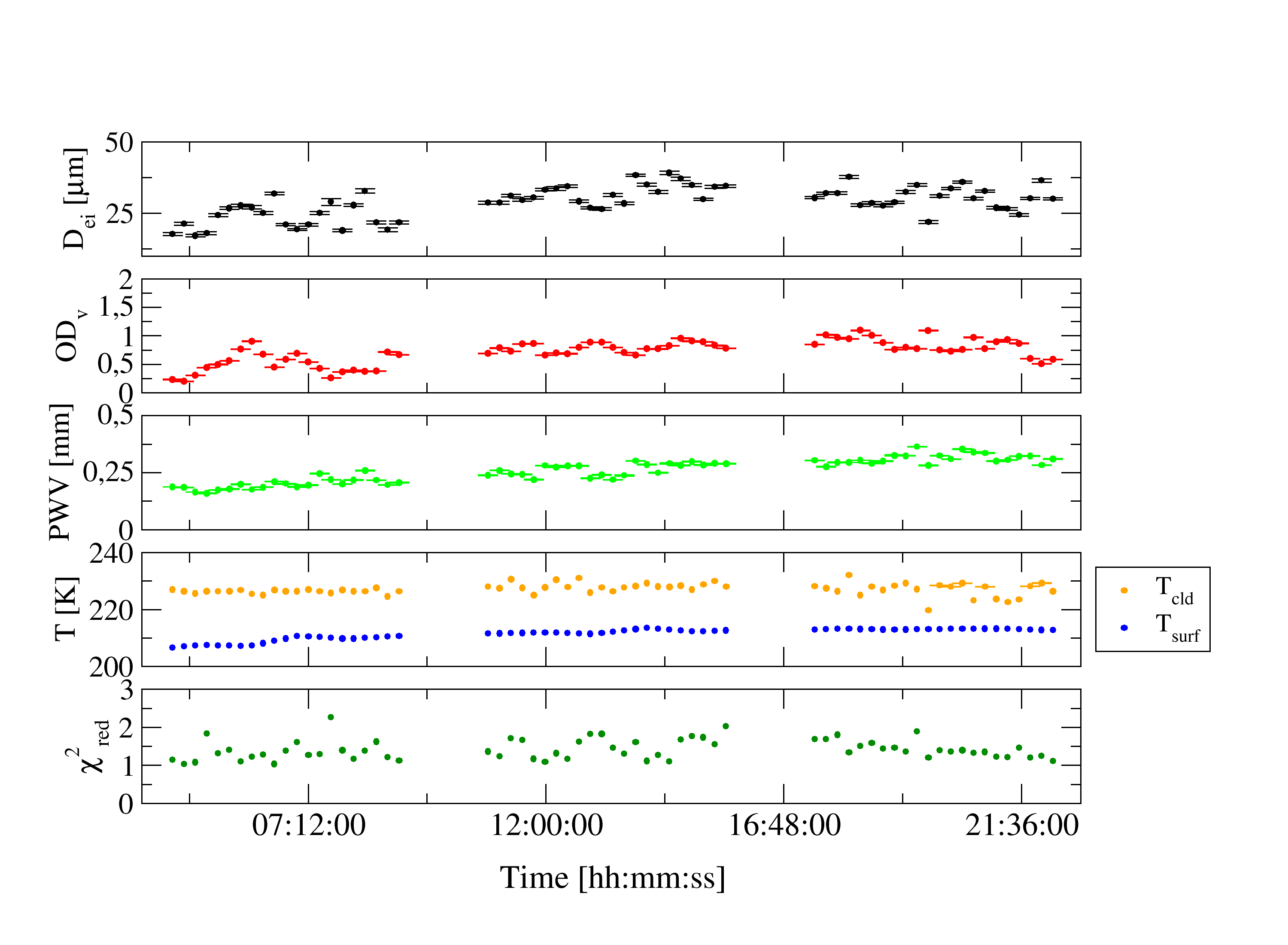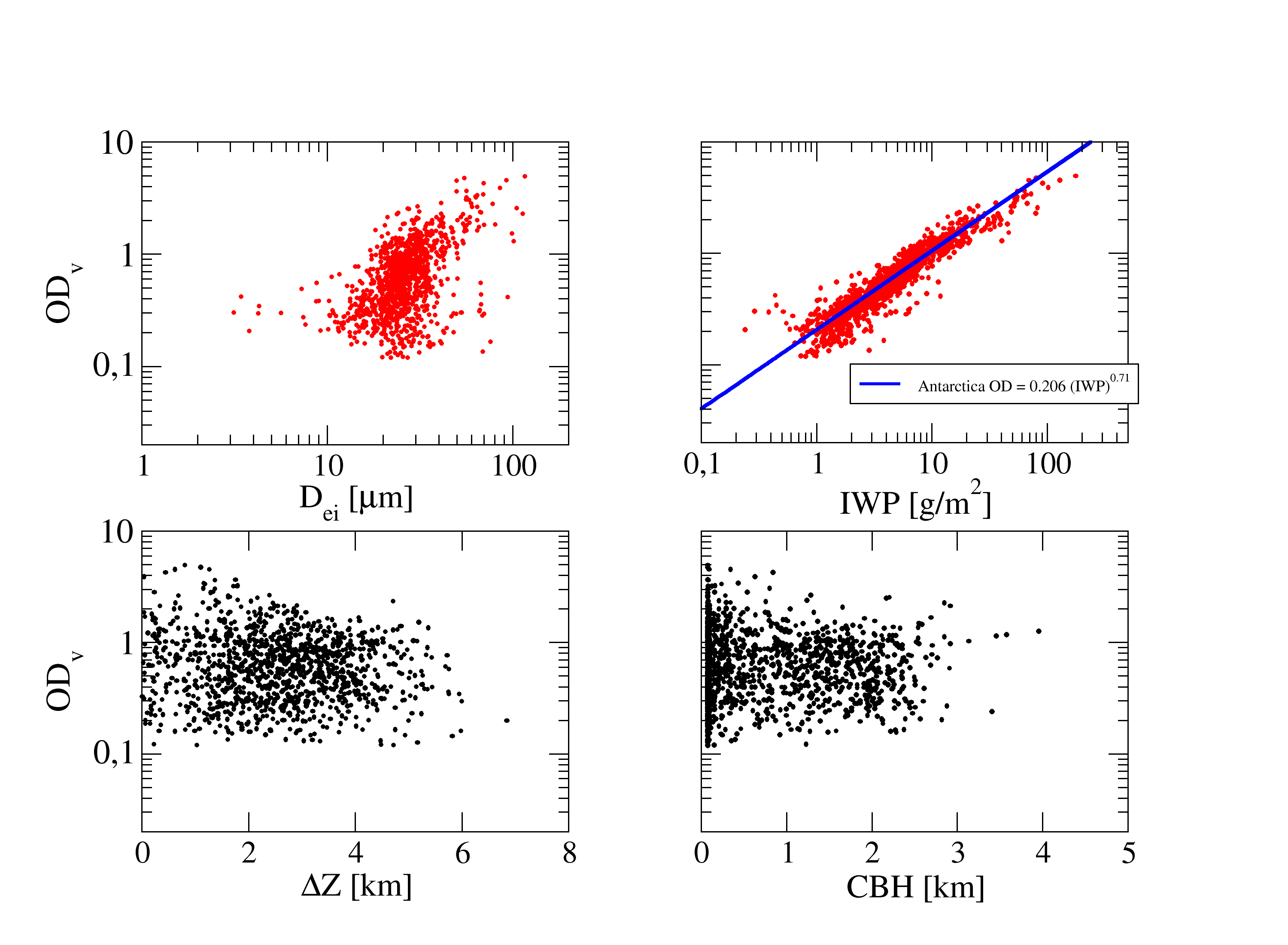- Acronimo
- FIRCLOUDS
- Codice
- PNRA16_00189
- Area di ricerca
- Earth science
- Tematica specifica di ricerca
- Study of radiative properties of ice and mixed clouds in Antarctica
- Regione di interesse
- Antartide
- PI
- Gianluca Di Natale
- Istituzione PI
- Istituto Nazionale di Ottica - CNR
- Sito web istituzionale
- https://www.ino.cnr.it/?lang=it, https://spheres.ino.it/
- Altre Istituzioni e soggetti coinvolti
- CNR-ISAC, Università di Bologna, Università di Firenze
- Consistenza del team ricerca
- Ricercatori TD 1 Ricercatori di ruolo/ Prof. univ. 8 Assegnisti 1 Dottorandi 1
- Stato progetto
- In corso
- Stazioni principali usate
- Concordia
- Il progetto
The main goal of the project is the identification of well-characterized case studies aimed at a radiative self-consistency experiment of ice clouds and in mixed phase on the Antarctic Plateau, as well as the improvement of current spectral patterns in the far-infrared region. This can be achieved through the synergistic use of various measurement instruments operating in different bands of the electromagnetic spectrum and installed at the Concordia base, particularly at the Physics shelter. The infrared radiation emitted by the atmosphere and clouds is measured by the Fourier transform spectroradiometer REFIR-PAD (Radiation Explorer in Far Infrared - Prototype for Applications and Development) operating at Concordia since 2012, the position and phase of clouds is estimated by the backscattering and depolarization LIDAR active since 2008, the particle size distribution can be estimated by an ICE- CAMERA, i.e., a kind of optical scanner that collects precipitating ice crystals on the shelter roof. As of the 2018-2019 campaign, a 24 GHz weather radar (Micro Rain Radar, MMR) operating continuously has been installed on the roof of Physics, which can provide an estimate of the precipitation rate of ice crystals and the falling velocities of those crystals. From these measurements, efforts are also being made to estimate the ice content in the case of precipitating ice clouds. Finally, during the last 2019-2020 campaign, a HALO-CAMERA was also installed, which can provide an estimate of the shape of ice crystals that can be used as a priori information in transfer models
radiative suitable for simulating the effect of clouds.In order to complete the radiative closure (or self-consistency) experiment, the idea is to use the values of the parameters of the precipitating ice clouds, i.e., optical thickness and effective diameter, obtained from the inversion of the spectra produced by REFIR-PAD, to characterize the size distribution of the ice crystals and use the latter to calculate the reflectivity at the MRR radar wavelength, i.e., 24 GHz. The calculation of reflectivity obviously depends on the type of particles (habit) that are assumed, so the inversion procedure of the spectra produced by REFIR-PAD is repeated assuming different types of particles, thus using different optical property databases depending on whether aggregates, bullet rosettes, hexagonal columns, platelets or hollow columns are used. Consequently, the same habit assumptions will have to be made for the calculation of radar reflectivity. The reflectivity obtained can at this point be compared with the experimental reflectivity measured by MRR. Data analysis was carried out by Dr. Alessandro Bracci of ISAC-CNR belonging to the group led by Dr. Luca Baldini. Unfortunately, the very small size of the crystals at Concordia, due to the extremely low temperatures and very low humidity values, make it difficult to detect many of these crystals. For this reason, an initial work involved precisely the selection of optimal cases that could be analyzed. The work appears to be still in progress although positive results have already been obtained from the retrieval products of REFIR-PAD, which have allowed the estimation of the reflectivity at 24 GHz, which has been compared ,in the cases of best radar signal, with that measured by MRR obtaining a good agreement.The backscattering signal allows to derive the top and bottom elevations of the cloud to be fixed in the simulation of the radiative transfer. The depolarization signal makes it possible to discriminate the presence of ice, as water droplets do not produce depolarization signal. The lidar data, along with halo-camera and ice-camera data, are provided by Dr. Massimo Del Guasta.
- Immagini
-
- Motivazione, importanza della ricerca
Cirrus play a key role in the Earth's radiative budget (ERB), as demonstrated by many studies, as they modulate radiation from the Sun and thermal radiation emitted by the Earth depending on their optical and micro-physical properties. Their contribution is particularly significant in the far-infrared (FIR) portion of the spectrum (above 15 microns wavelength), which is the most energetic band with more than 50 percent of the emitted heat flux. In polar regions, the contribution in the FIR can be even greater reaching up to 60 percent due to extremely dry conditions and cold temperatures.
However, there is still a lack of spectrally resolved radiance measurements in the FIR from both satellite and ground-based sites. The polar regions are an ideal place to study ice clouds because the low humidity allows probing the upper part of the troposphere where cirrus clouds form. In particular, Dome-C is located 3,233 km above sea level, thus close to the upper part of the troposphere since in Antarctica the tropopause begins at about 7 km altitude. The study of this type of cloud gives us the opportunity to better understand the mechanisms that regulate energy exchanges between our planet and space and to improve our knowledge regarding climate change.
- Obiettivi della proposta
The main goal of the project is the identification of well-characterized case studies aimed at a radiative self-consistency experiment of ice clouds and in mixed phase on the Antarctic Plateau, as well as the improvement of current spectral patterns in the far-infrared region. This can be achieved through the synergistic use of various measurement instruments operating in different bands of the electromagnetic spectrum and installed at the Concordia base, particularly at the Physics shelter. The infrared radiation emitted by the atmosphere and clouds is measured by the Fourier transform spectroradiometer REFIR-PAD (Radiation Explorer in Far Infrared - Prototype for Applications and Development) operating at Concordia since 2012, the position and phase of clouds is estimated by the backscattering and depolarization LIDAR active since 2008, the particle size distribution can be estimated by an ICE- CAMERA, i.e., a kind of optical scanner that collects precipitating ice crystals on the shelter roof. As of the 2018-2019 campaign, a 24 GHz weather radar (Micro Rain Radar, MMR) operating continuously has been installed on the roof of Physics, which can provide an estimate of the precipitation rate of ice crystals and the falling velocities of those crystals. From these measurements, efforts are also being made to estimate the ice content in the case of precipitating ice clouds. Finally, during the last 2019-2020 campaign, a HALO-CAMERA was also installed, which can provide an estimate of the shape of ice crystals that can be used as a priori information in radiative transfer models suitable for simulating the effect of clouds.
- Attività svolta e risultati raggiunti
During the various measurement campaigns at Concordia, routine maintenance of the REFIR-PAD (under Dr. Giovanni Bianchini's DoCTOR project), ICE-CAMERA, and LIDAR instruments, installation of the micro rain radar (MRR, 2018), the HALO-CAMERA (2019) could be carried out.
- Prodotti
L1 products: spectral radiances from REFIR-PAD (under Dr. Giovanni Bianchini's DoCTOR project), backscattering/depolarization lidar profiles, reflectivity and fall velocity of ghaiccium crystals from MRR. Images of precipitating crystals from ICE-CAMERA and images of solar halos from HALO-CAMERA.
L2 products: retrieval from spectral radiances in the infrared provided by REFIR-PAD, then optical (optical thickness) and microphysical properties (effective diameter of ice crystals and water droplets), ghaecal/water ration in the case of mixed clouds. Occurrence and cloud position and presence of ice/water from lidar measurements.
Three project articles have been produced so far but more are in progress:
[1] “Consistency test of precipitating ice cloud retrieval properties obtained from the observations of different instruments operating at Dome-C (Antarctica)”, Gianluca Di Natale, David D. Turner, Giovanni Bianchini, Massimo Del Guasta, Luca Palchetti, Alessandro Bracci, Luca Baldini, Tiziano Maestri, William Cossich, Michele Martinazzo, and Luca Facheris, published on Atmospheric Measurements and Techniques Discussion, 10.5194/amt-2022-215, https://amt.copernicus.org/preprints/amt-2022-215/.
[2] “Ice and Mixed-Phase Cloud Statistics on Antarctic Plateau”, William Cossich , Tiziano Maestri, Davide Magurno , Michele Martinazzo, Gianluca Di Natale, Luca Palchetti, Giovanni Bianchini and Massimo Del Guasta, Ice and Mixed-Phase Cloud Statistics on Antarctic Plateau, Atmospheric Chemistry and Physics, 21, 13 811–13 833, https://doi.org/10.5194/acp-21-13811-2021, 2021.
[3] “Characterization of the Far Infrared Properties and Radiative Forcing of Antarctic Ice and Water Clouds Exploiting the Spectrometer-LiDAR Synergy”, Gianluca Di Natale, Giovanni Bianchini, Massimo Del Guasta, Marco Ridolfi, Tiziano Maestri, William Cossich, Davide Magurno and Luca Palchetti, Remote Sensing, 12, 3574 , 2020.
